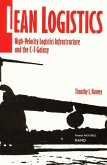As part of a larger study of support for Expeditionary Aerospace Forces, this work addresses logistics structure alternatives for meeting demands for Low Altitude Navigation and Targeting Infrared for Night (LANTIRN) across a spectrum of operational requirements.
This analysis addresses logistics structure alternatives for meeting demands for Low Altitude Navigation and Targeting Infrared for Night (LANTIRN) across a spectrum of operational requirements. The study amends earlier research with new data collected during the air war over Serbia by comparing the current decentralized policy with consolidated options in which maintenance capabilities do not deploy. Consolidating the LANTIRN intermediate maintenance support system may enhance operational flexibility, improve support responsiveness, and decrease the requirements for highly skilled personnel. However, a regional support structure would be more sensitive to transportation delays and require greater cross-organizational communication. New data suggest that the USAF may not have enough equipment to support two coincident wars. The decision to centralize or decentralize LANTIRN repair operations hinges on the capability and risk levels the Air Force is willing to accommodate.
This analysis addresses logistics structure alternatives for meeting demands for Low Altitude Navigation and Targeting Infrared for Night (LANTIRN) across a spectrum of operational requirements. The study amends earlier research with new data collected during the air war over Serbia by comparing the current decentralized policy with consolidated options in which maintenance capabilities do not deploy. Consolidating the LANTIRN intermediate maintenance support system may enhance operational flexibility, improve support responsiveness, and decrease the requirements for highly skilled personnel. However, a regional support structure would be more sensitive to transportation delays and require greater cross-organizational communication. New data suggest that the USAF may not have enough equipment to support two coincident wars. The decision to centralize or decentralize LANTIRN repair operations hinges on the capability and risk levels the Air Force is willing to accommodate.








